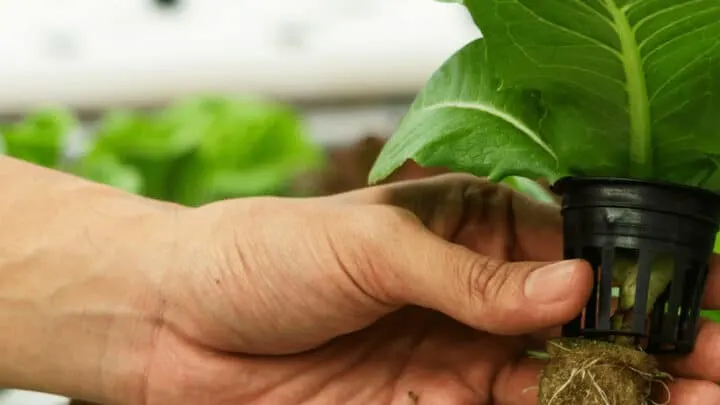Root rot is a disorder that affects the roots of plants.
There are two reasons for root rot: poor drainage and over-watered soil.
Waterlogged conditions stop roots from taking in the oxygen they need to survive.
When oxygen-deprived roots decay after death, the rot they leave behind might spread to healthy roots even after the sodden conditions have been remedied.
Table of Contents
How to fix root rot in hydroponics
Follow these steps to fix root rot in hydroponics:
- Shut off the hydroponic system.
- Remove dead or diseased plants.
- Detach dead roots and wash the others in clean, running water.
- Use a pair of scissors to cut off rotted parts from the remaining roots.
- Drain the nutrient solution from the system.
- Run the system again and add fresh nutrient solution to it. Maintain about 70°F and keep the air pump going for several days.
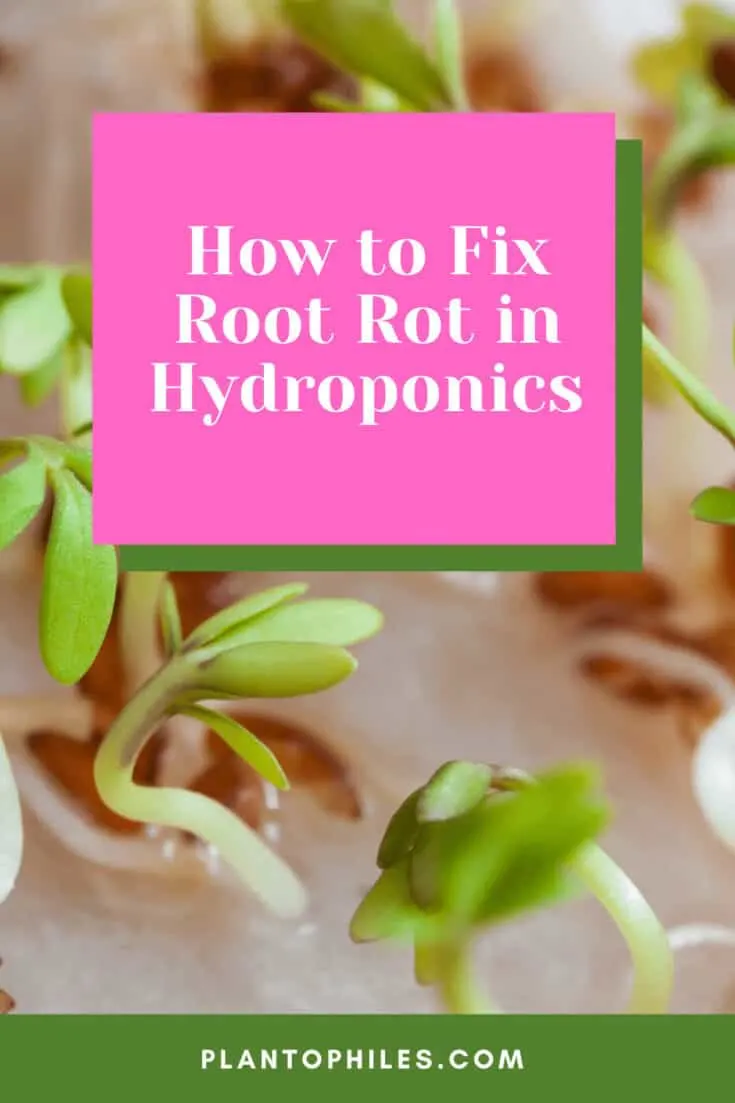
How to Fix Root Rot in Hydroponics
How to know you’re dealing with root rot in your hydroponic system
Routinely check your plants from their leaves all the way down to their roots.
Look for the following telltale signs to identify a problem with plants’ roots in your hydroponic system.
- Leaves: leaves will start changing color, turning brown, or becoming dry.
- Root: if you notice that your leaves appear awful, it’s a sign your plants’ roots may be in trouble. Unhealthy roots may seem slimy and particularly tangled up. When root rot is far advanced, the roots will turn brown. Make sure to check them immediately.
- The smell: when you open the tank’s lid, root rot will cause your reservoir to emit a strange and horrid smell that is quite unforgettable.

Roots need to be rinsed after discovering root rot
Fixing root rot in a hydroponic system
If the leaves of your plants show evidence of decay, all dead matter in the roots must be removed and thrown away.
Over a sink, clean your plants’ root systems carefully. Remove everything slimy or dead from the roots.
The next step will be to immerse the root bed with sterilizing agents for 12 hours, max.
One option that works in this regard is Physan 20.
It’s important to remember that this product isn’t aware of the distinction between harmful and good bacteria.
Now that you’re cleaning your hydroponic system, this is the perfect time to add root builders to make your roots stronger and your plants healthier.
Root builders are stuffed with beneficial bacteria that help improve the aeration of your nutrition solution.
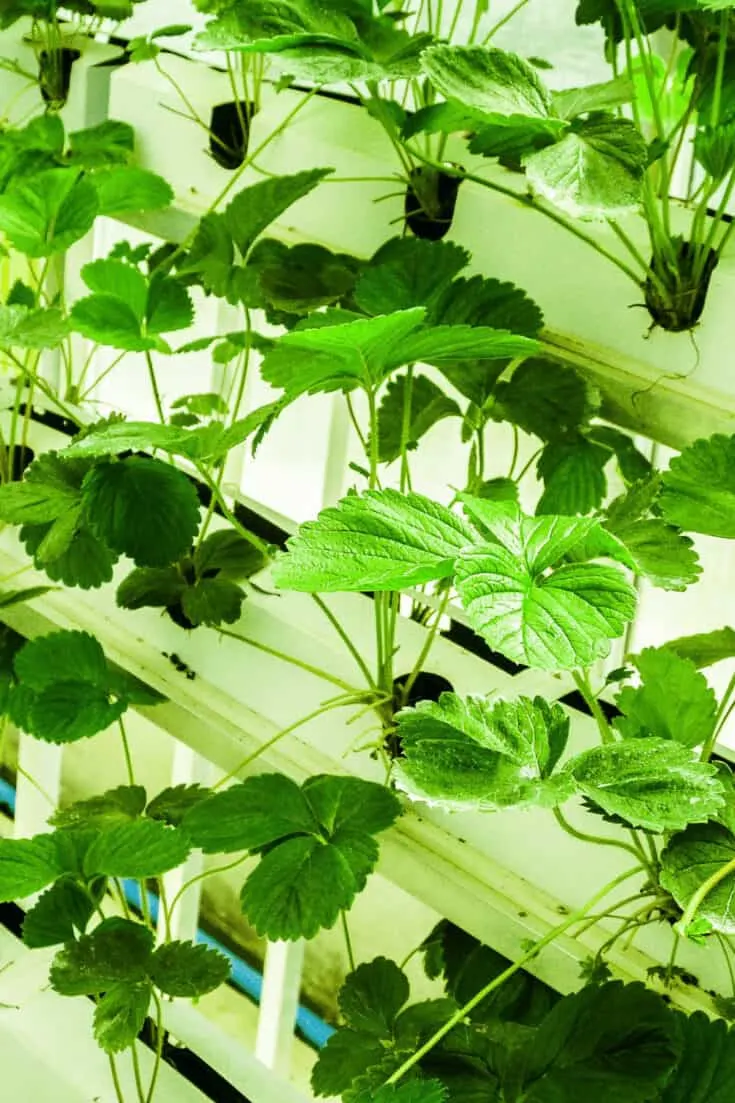
When you suspect root rot you have to act immediately
Next, follow these steps (expanded from the brief explanation given earlier) to save your plants from root rot.
- The system should be flushed out. Begin by disconnecting all electronic parts from your hydroponics system.
- Remove the plants that have root rot from the growing medium. This is easy when using peat moss, coconut coir, or clay pellets, but it is a bit harder when using ready-made growth plugs or Rockwool.
- Rinse the roots with running water. Check that the pH of the water is as close to neutral as possible (i.e., at, or nearly 7.0).
- Carefully rinse the roots and rinse the excess debris and water away.
- With the aid of an instrument such as a scissor, or a knife, cut the affected roots (yellowish/brownish in color and greasy) and remove them from the plant, one by one.
- Clean your reservoir with a hydrogen peroxide solution, if you can, or simply water.
- Refill the reservoir using a water-based nutrient solution. Do not fill it up completely this time. Only use just enough to cover the roots inside the reservoir without letting them float.
- Start the hydroponics system. Leave the air pump working continuously and ensure that the temperature stays at around 70°F.
- Check the root growth over several days.
If the root system seems healthy (roots should be brittle to the touch and have a pale, white color), you may raise the level of the nutrition solution.
It is also essential to ensure that the air pump stays running to ensure an adequate oxygen supply.
If the root system still seems unhealthy, then you’ll have to apply hydrogen peroxide or Hydroguard to rid yourself of the root decay.
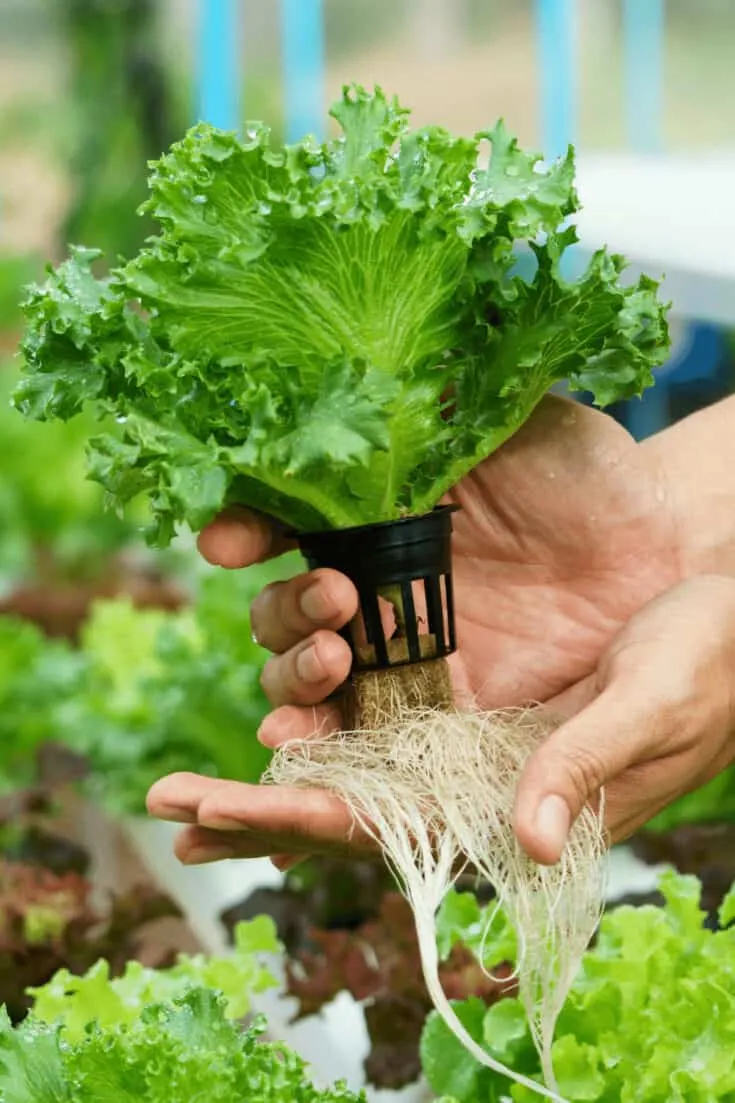
To fix root rot in hydroponics dead roots have to be removed
How to prevent root rot in your hydroponic system
Prevention is always better than cure. You can avoid root rot in hydroponics when you know the cause and avoidance of root rot.
Keep the reservoir sterile and properly aerated
Keep your hydroponics system clean and in a sterile state.
Remove any contaminants from the system as needed and clean all the parts that comprise your setup. Check to ensure there isn’t a place for pathogenic bacteria to begin breeding.
Choose a good pump and air stone since this will help improve air circulation.
The nutrient solution needs to be aerated to the correct level to ensure that root rot doesn’t ever threaten the hydroponics system.
The addition of air stones is possible to achieve the best end result.
Regularly trim your roots to allow oxygen and nutrients to flow easily.
Make sure that roots’ growth doesn’t get out of hand to the point that they themselves block access to the essential nutrients your plants require.
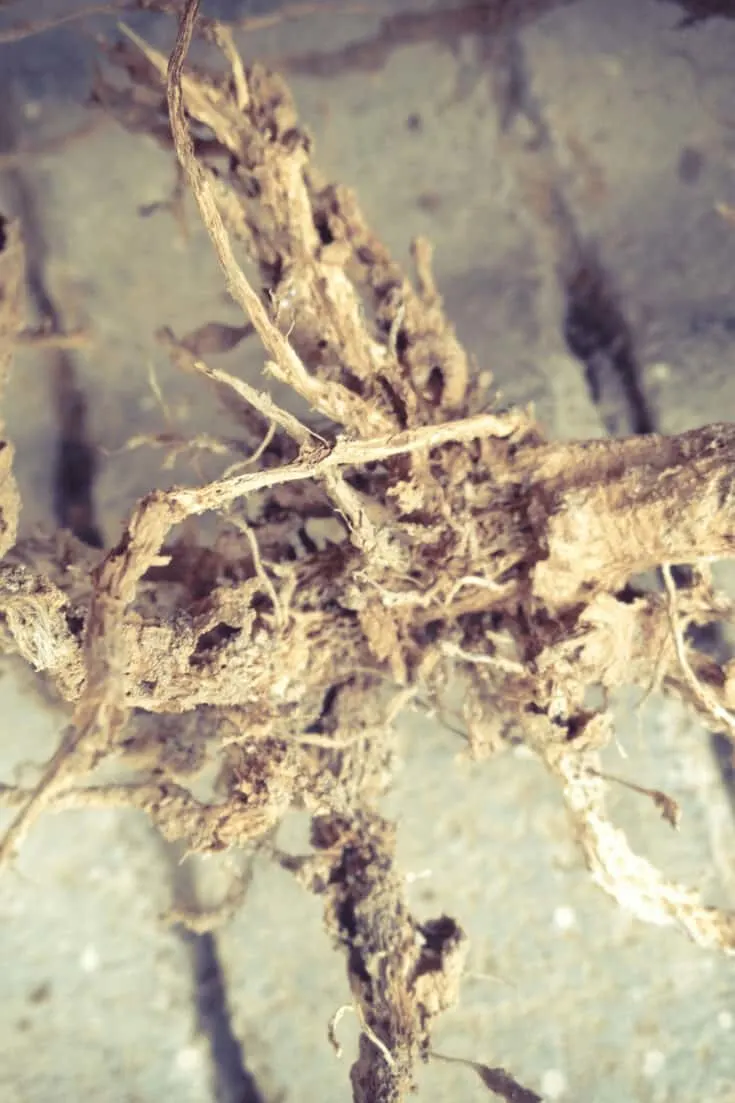
Rotted roos become dark, soft and mushy
Change the water frequently
The hydroponic systems work, you must replace the water in the reservoir regularly.
If you do not, it can disrupt the smooth and healthy functioning of the roots.
At the end of development (flowering stage), the roots become vulnerable to pH levels and other nutrients.
This requires a water change as frequently as every week to ten days.
The most important thing is not to disturb the plants when they are clones or seedlings trying to establish themselves within your system.
At this stage, they have not yet formed an effective colony of bacteria and do not have their own biofilm, which can help keep their roots safe from pathogens.
Beware of fungi and other pathogens
Pests are vectors of pathogens, therefore, it is crucial to be aware of any on your property.
It may be helpful to put in the effort to set traps and vents to keep away any insects that could harm your plants.
If you’re looking to create an improved crop, it is good to introduce beneficial bacteria.
In this way, your plant’s roots can absorb more oxygen and produce even better plant growth.
Additionally, plants with healthy roots are protected from the dangers posed by root rot.
Reservoirs that are clean and well-aerated are the most effective ways of preventing root rot.
Another option is to spot the signs on time and deal with them.
Frequently Asked Questions About How to Fix Root Rot in Hydroponics
Can fungi trigger root rot in my hydroponic system?
Fungi do trigger root rot. They generally affect stems and roots by leading to lesions or cuts. They invade tissues that are dying or dead, and then the condition gets worsened by excessive watering.
Does lighting have anything to do with root rot in my hydroponic system?
While harmful organisms and bacteria love light, the roots dislike it just as much. If you employ grow light, this issue worsens because you’re providing everything bacteria require to flourish. Use black tubing and reflective coverings in a thick-walled reservoir with taped-over light leaks (gaps and cracks).
Afterword: How to fix root rot in hydroponics
Many hydroponic farmers decide to quit after discovering their plants suffer from root rot.
They decide to destroy their entire setup and start over.
This is a terrible and unnecessary loss.
Follow the advice in this article to recover from root rot and prevent further occurrences.

Daniel has been a plant enthusiast for over 20 years. He owns hundreds of houseplants and prepares for the chili growing seasons yearly with great anticipation. His favorite plants are plant species in the Araceae family, such as Monstera, Philodendron, and Anthurium. He also loves gardening and is growing hot peppers, tomatoes, and many more vegetables.

